The Complete History Of The XWF
The history of the XWF
.jpg&w=3840&q=75)
Nov 6, 2025
Within the first three months of 2001, the professional wrestling landscape completely changed forever. First, Extreme Championship Wrestling, the perceived number three promotion in the United States, went out of business with a whimper. Not long after, World Championship Wrestling was bought by Vince McMahon’s World Wrestling Federation as AOL Time Warner looked to offload professional wrestling.
All of a sudden, the only major promotion in North America was WWF, leaving pro wrestlers with severely limited options if they wanted to be on TV and actually make pro wrestling their full-time job.
The ultra-violent vacuum left by ECW’s bankruptcy led to a whole host of imitators, including CZW, XPW, and 3PW, but only one promotion decided to book family-friendly wrestling, using recognisable stars from the past and a handful of promising upstarts in their bid to make a mark on the industry.
The XWF was, ultimately, not a success, but just how it came to be and exactly why it failed to get off the ground is, in itself, an interesting story that offers insight into the wrestling business during a critical period. As their catchphrase used to say: "No more prima donnas, no more politics…in your face!"
When WCW closed its doors on March 26, 2001, the then-WWF acquired the contracts of 24 wrestlers, most of which were lower-card performers. The major stars didn't jump to the World Wrestling Federation for the most part, however, as they had large, guaranteed contracts with WCW’s parent company, AOL Time Warner, and were under no obligation to accept a buyout and join WWE. The likes of Sting, Goldberg and Kevin Nash, could, and would, happily sit at home for the remainder of their deals.
For the wrestlers who either weren’t picked up by WWE or didn’t have a big contract to pay the bills, their options were limited to either domestic and international indies or a spot touring with one of the Japanese organisations.
Brian Knobbs, one half of the Nasty Boys tag team, was the first person who brought up the idea of securing funding and getting the band back together to create a new promotion. At the same time, Knobbs' close friend Hulk Hogan had been in talks with Universal for months, though it wasn’t known just exactly what sort of venture they were meeting about. Some speculated that it was about a restaurant and separate attraction at Universal's resort.
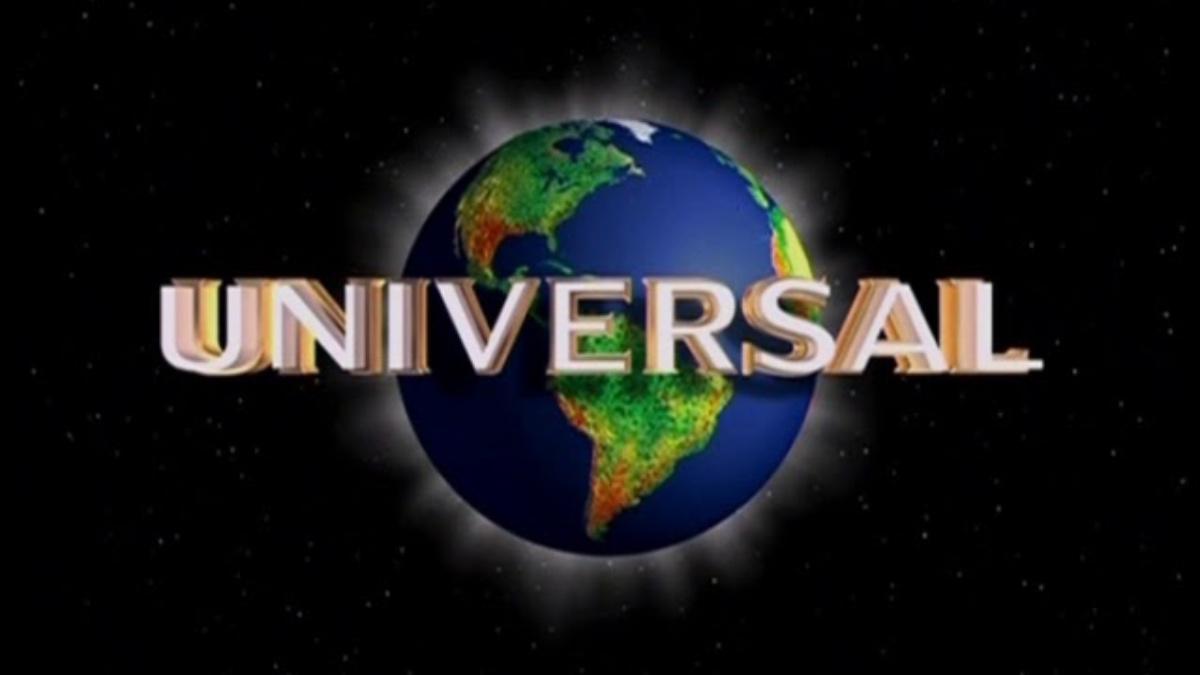
Hogan’s negotiations caused an issue in early 2001, however, when Eric Bischoff met with Universal in an attempt to secure funding for MatRats, a Calgary-based promotion that consisted of wrestlers between the ages of 14 and 21 performing innovative, high-risk moves in a ring that had small platforms attached to the ring posts.
Bischoff name-dropping Hogan during his meeting with Universal as a wrestler who might be involved with MatRats caused studio heads to question whether or not Hogan would be involved in another pro wrestling league they had already discussed with him, with it emerging in early June that Universal and Hogan were looking to produce a one-hour TV pilot centred around The Hulkster to be filmed at Universal Studios in Orlando, Florida.
The tentative date for the taping was scheduled for August 8, 2001 and several wrestlers began cutting promos for the event, including Emory Hale, an absolute giant of a man who had wrestled a dozen matches for WCW as Hail, where he was managed by Jimmy Hart. Hale was purported to be the big monster heel being groomed for a main event spot against Hogan at the taping.
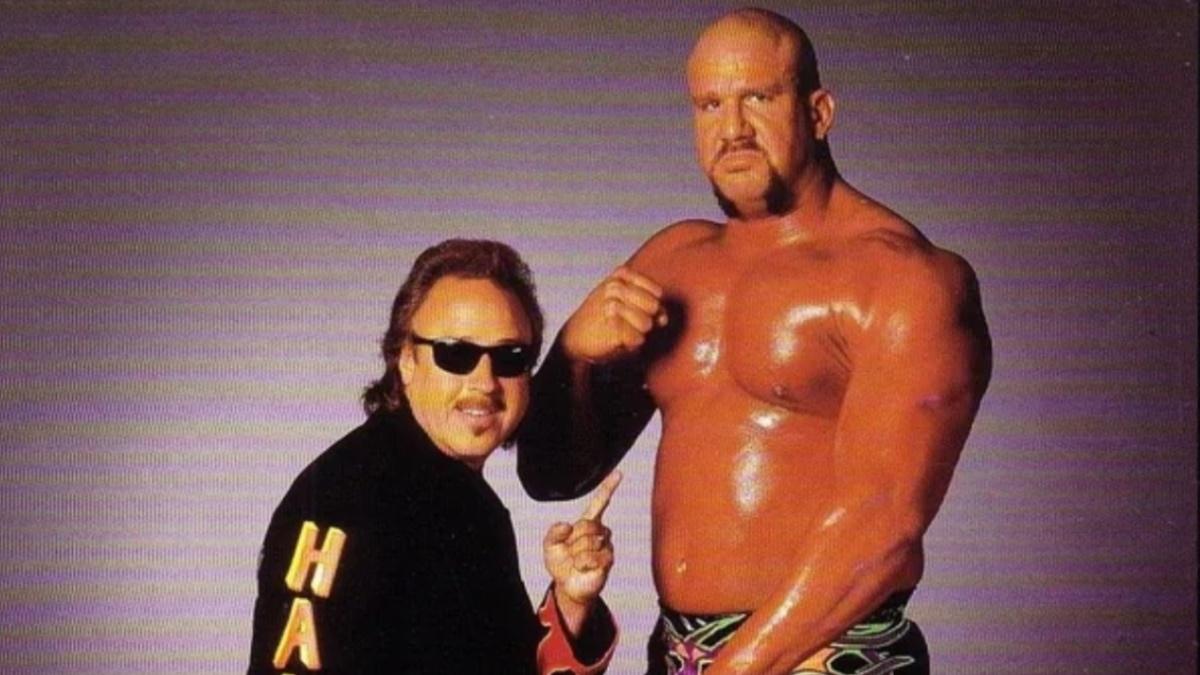
Jimmy Hart, meanwhile, contacted wrestlers to be part of the pilot and there was enough interest that a FOX executive asked to be given the first opportunity to review the pilot. Other wrestlers rumoured for the taping included Bret Hart and Roddy Piper, while Hogan’s celebrity friends Jay Leno, George Foreman and Shaquille O’Neal were being considered for cameo appearances.
Hogan continued to negotiate with Universal, via his lawyer Henry Holmes, throughout June. Universal, meanwhile, had become concerned with the risqué tone of recent WWE programming and wanted assurances that there would be no scantily clad women or profanity on the pilot.
That wasn’t a problem, though, since Hogan and co. had no desire to go in that direction, and had no real desire to be true ‘competition’ for Vince McMahon since they knew that would be borderline impossible without major financial backing.
In July 2001, there were rumblings that Jerry 'The King’ Lawler - who had quit WWE in protest after they fired his wife Stacy ‘The Kat’ Carter in February - would make the would-be promotion his new home.
Later that month, it became apparent that the prospective promotion would not be taping a pilot on August 8, and that talks between Hogan’s camp and Universal were "on hold" for the time being. Hogan then gave an interview to a local newspaper in Barrie, Ontario while doing a celebrity golf tournament with Jimmy Hart where he said the new promotion was a way for his career to end in a logical way, with Hogan having not appeared in a pro wrestling ring since the infamous incident at Bash at the Beach 2000.
Hogan also expressed his hope that Roddy Piper and Bret Hart would be part of the project, and said that Vince McMahon would be better off paying him $50 million a year not to go against him.
During an interview on Bubba the Love Sponge’s radio show around the same time, Hogan was very complimentary of perennial frenemy Randy Savage, but did concede that his group wouldn’t be able to afford Goldberg due to what he was being paid on his Time Warner deal to sit out.
Then, on July 24, Hogan suddenly claimed that he had put all plans for a promotion on hold for at least six months, citing a lack of interest among the major television networks. Days prior, Hogan’s representatives were still talking to people within wrestling and giving details about the company and who would be involved. Those who had spoken to Hogan’s representatives said that the key players would be Hogan, Jimmy Hart, Sting (once his Time Warner deal expired in early 2002), Bret Hart, Roddy Piper, Kevin Sullivan, and Sable and Chyna when they were legally available.
Another stumbling block, besides a perceived lack of network interest, was Hogan’s ongoing defamation of character lawsuit against Time Warner and Vince Russo, stemming from the aforementioned incident at Bash at the Beach 2000. Some close to the situation also felt like Hogan had one eye on a WWE comeback.
Hogan - who was recovering from a minor knee surgery - spoke with Eric Bischoff in mid-September 2001 to see if there was anything positive about starting a new promotion. Bischoff advised Hogan that everything was pretty much dead in the water since a promotion couldn’t be sustained without television and nobody he had met with had shown any interest.
Shortly after that conversation, however, news emerged that a deal had indeed been signed and funding was in place for a new promotion that would tape at Universal Studios. Hogan would not be involved, however.
After Hogan pulled out of negotiations, this paved the way for Jimmy Hart and Brian Knobbs to take over talks. They were joined by David Penzer and Janie Engle, who worked out of a new office in Tampa, Florida in several roles. Kevin Sullivan, meanwhile, would assist with booking, while Greg "The Hammer" Valentine was brought in as a trainer.
The idea presented to wrestlers contacted in late September to work the tapings on November 13 and 14 was to record a two-hour pilot, along with eight one-hour shows for syndication. Talent would, at least initially, be signed for just those two dates, but the money was said to be satisfactory given the climate of pro wrestling in late 2001.
It was also reported that the as-yet-unnamed promotion was already in talks for foreign syndication deals, but had no significant leads on the domestic front.
It soon emerged the money behind the operation was from Kevin Harrington, who had made a fortune as the person responsible for the ‘As Seen on TV’ infomercials. Harrington then used his connections to get other investors involved, like fellow infomercial magnates Walter Franks and Ludwell Denny.
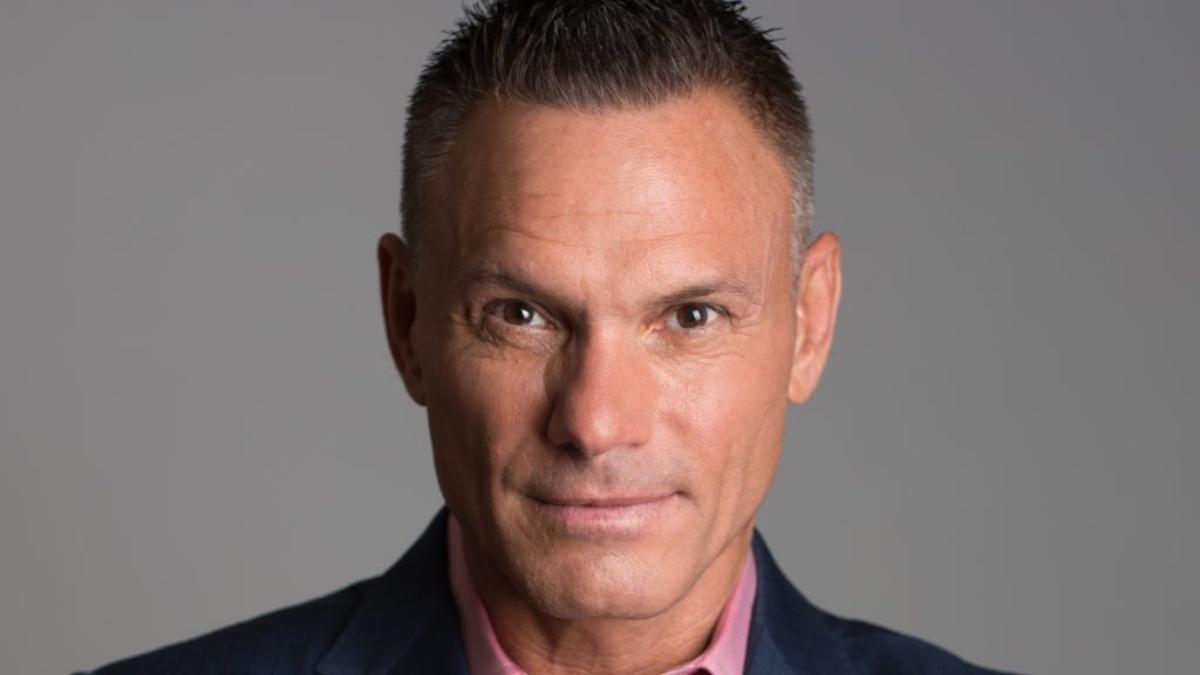
Despite the cash available, the odds were very much against the XWF. The promotion had a lot of buzz for a start-up, but without cable, television industry insiders suspected the promotion would be short-lived and unprofitable.
That buzz from fans and those within pro wrestling brought the attention of Vince McMahon's WWF. The World Wrestling Federation was getting used to having no competition and they didn't want to see another promotion cut into their market share.
Soon after, it emerged two talents who wouldn’t be involved with the XWF were Bret Hart and Randy Savage. Hart had told Knobbs he didn’t want to be involved in a promotion if he couldn’t wrestle, while Savage’s demands were said to be exorbitant and discussions didn’t progress beyond the initial stages.
The promotion continued to make additions, though, as Tony Schiavone and Jerry Lawler were locked in as the announce team, while Hulk Hogan and Mean Gene Okerlund met with the XWF in early October. On October 25, Hogan confirmed his participation in the XWF, saying on Bubba the Love Sponge’s radio show that he would be the majority owner of the XWF and would deal with talent directly. In reality, Hogan had zero ownership stake in the XWF and he was only planned to work a few special matches for the promotion per year.
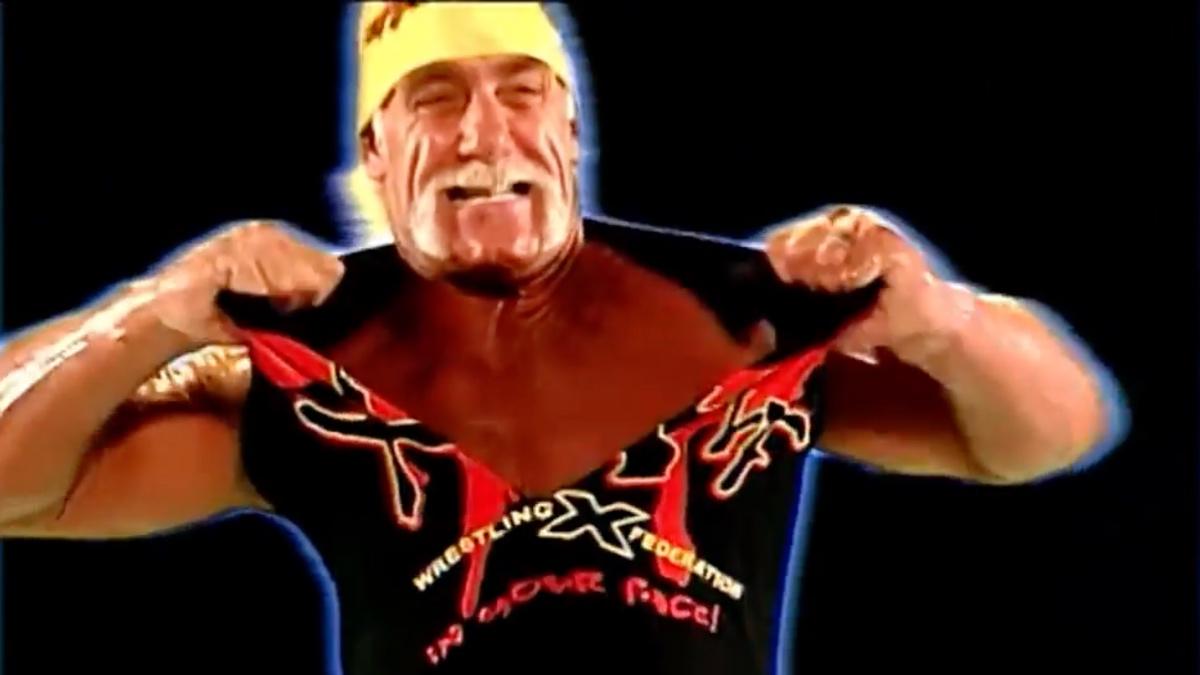
Hogan also mentioned some talent that would be involved at the inaugural tapings, naming Vampiro, Curt Hennig, The Nasty Boys, Disorderly Conduct, The Shane Twins, the Harris Brothers, and Josh Mathews (fresh from Tough Enough).
Around this time, the XWF were in talks with Ric Flair and the promotion were willing to buy out his Time Warner contract, with there being interest in running another feud between The Nature Boy and The Hulkster.
On top of the television tapings, reports suggested that the XWF and Universal had reached an agreement for the promotion to run events three times per week as a park attraction, which wouldn’t end up happening, while XWF management had their sights set on future house show tours.
Things were looking up for the XWF, but those grand plans were soon scuppered when the top star who the first set of tapings were set to be built around withdrew.
Hulk Hogan pulled out of the inaugural XWF taping on November 9, telling friends that he did so because he had insurance concerns. According to Hulk, since the promotion was going to be marketed as "Hulk Hogan's XWF" with red-and-yellow ring ropes and him positioned as an on-air figurehead, his lawyers told him that any issues could potentially fall back on him.
Others close to the situation questioned whether this was actually the reason and suggested that the issues were more likely to do with money. Hogan reportedly wanted a $2 million contract with $50,000 paid up front, which ultimately wasn’t going to happen.
Despite pulling out, Hogan did show up to the first taping on November 13 as an act of goodwill to Hart and Knobbs, helping out backstage and recording a promo wishing the promotion well.
Without Hogan, the promotion still had plenty of recognisable stars scheduled to perform at the initial set of tapings, including Roddy Piper, Rena Mero, The Nasty Boys, The Road Warriors, Jim Duggan, Vampiro, Buff Bagwell, Jerry Lawler, Jimmy Hart, Konnan, Greg Valentine, Juventud Guerrera, Psicosis, Kid Kash, Marc Mero, Barbarian, and Norman Smiley. Stars of the future like AJ Styles and Christopher Daniels were also in action, while John ‘Earthquake’ Tenta and Bam Bam Bigelow were backstage at the tapings but ultimately weren’t used.
The first day of tapings was described as resembling WCW from 1994-95, with the main story being that Rena Mero was named kayface CEO and Roddy Piper was appointed commissioner. Wrestlers who performed were said to be happy with the laid-back atmosphere of the tapings, which were free to enter for Universal Studios patrons.
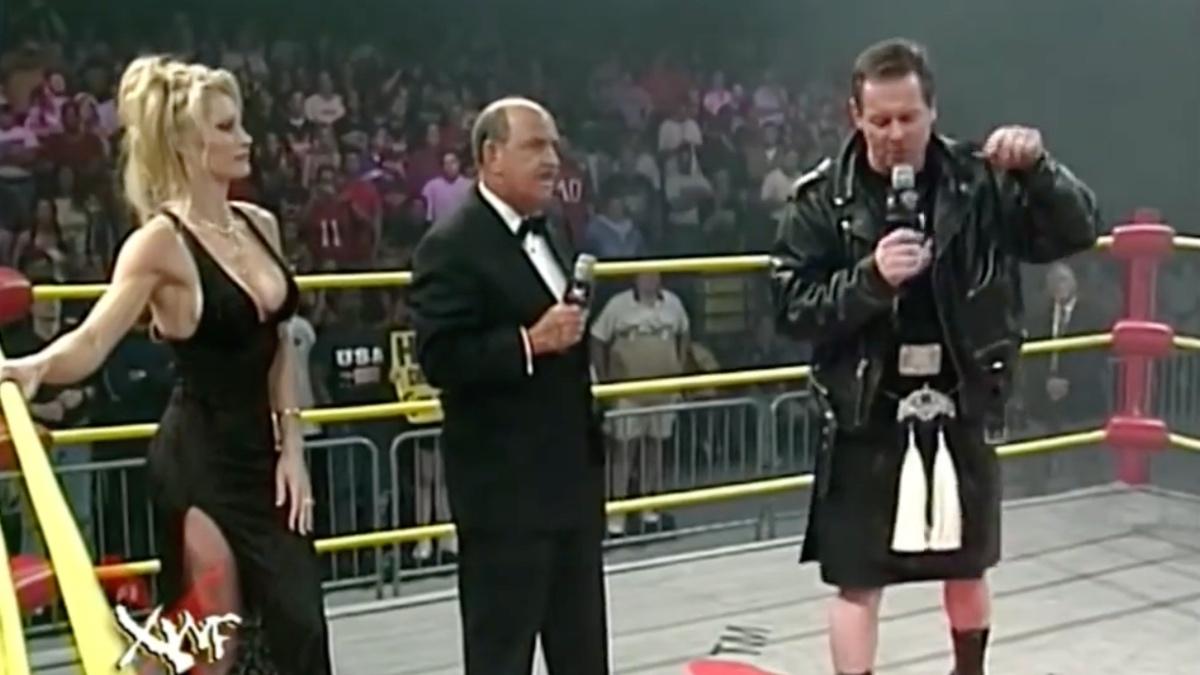
Those who were told at meetings before the first taping, and then at the taping itself, that Hogan wouldn’t be involved with the XWF in the short term were no doubt confused when Terry Bollea put on the iconic red and yellow and worked a match with Curt Hennig on the second day of tapings. Hulk beat the former Mr. Perfect in a routine Hogan match most notable for Heenan, acting as Hennig’s sports agent, taking his first actual bump in around a decade.
The match wasn’t on the initial run sheet – and Hennig ended up pulling double duty against Marc Mero – with those close to the situation putting it down to Hogan doing a favour for Jimmy Hart. Whatever the reason, Hogan had worked his first match since leaving WCW over a year earlier and was by far the most over act at the tapings. After his victory, Hogan vowed that he was coming after the XWF World Title too.
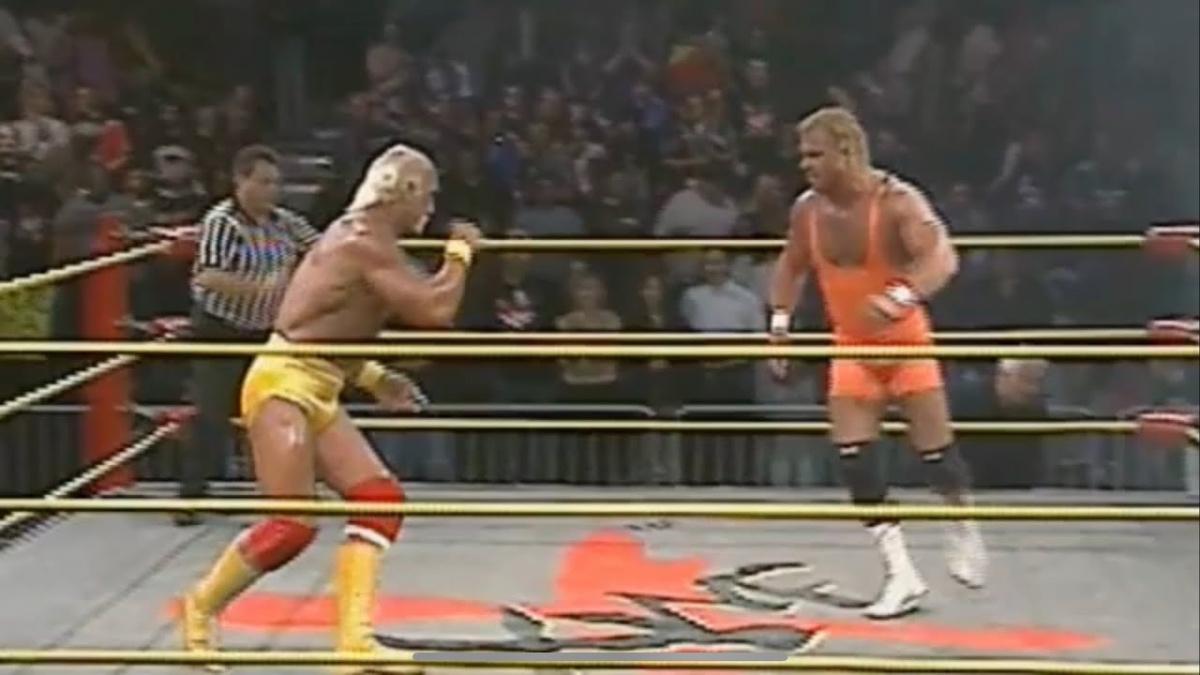
Despite winning his match and cutting a promo hinting at future participation, Hogan had definitely not signed a deal with the XWF. Jerry Lawler would also not be back as he inked a deal to return to WWE mere days later.
On November 15, 2001, the company held a press conference where they spoke confidently about getting a television deal to air the 10 episodes they had taped over the previous two days. XWF management had also been telling wrestlers that they expected to do two days of television tapings a month, with the next set in late January. They also planned on running around 145 house shows in 2002, with the first house shows taking place in December.
Those house shows were duly scheduled for December 28, 29 and 30 in Hammond, Indiana and Milwaukee & Green Bay, Wisconsin, with the top stars advertised being Roddy Piper, Curt Hennig, Buff Bagwell, Vampiro, The Nasty Boys, the Road Warriors, Jim Duggan, and Greg Valentine, most of which had signed 45-day contracts prior to the TV tapings.
There was scepticism from people within the industry that this approach would work, but the financial backers were operating under the assumption that the house shows were a loss-leader that could create buzz heading into the National Association of Television Programme Executives Convention in Las Vegas in January, where they hoped to sell their edited TV show to a domestic buyer.
Unfortunately, the XWF’s three-day tour of the Midwest didn’t exactly go well. The opening night in Hammond drew around 3,000 fans - 2,000 of which were paid - for a gate in the region of $50,000. Milwaukee then drew 3,500, before 1,500 attended the XWF event in Green Bay, with all of the events papered to some degree.
The poor houses convinced the backers to cancel three other shows in Port Huron and Battle Creek, Michigan and Toledo, Ohio scheduled for early January.
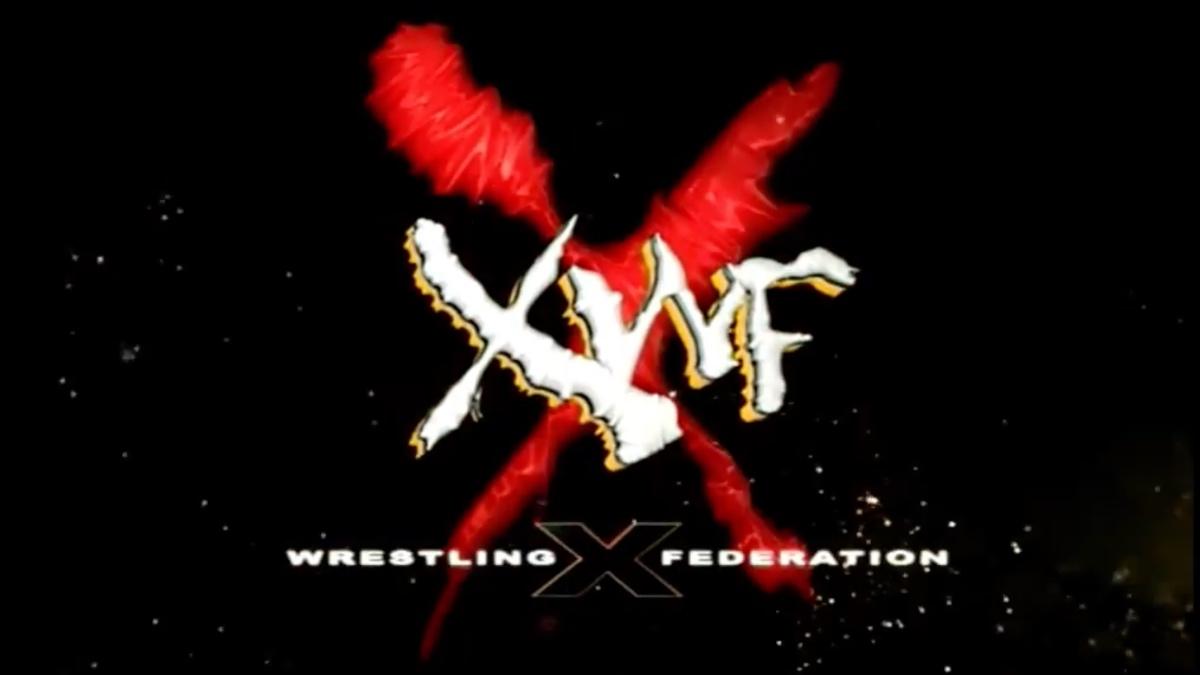
In a press release, the XWF claimed the cancellations were due to an unspecified "TV company" asking for them to keep all the footage for them, meaning they couldn’t use footage to run new infomercials to advertise the shows. In a rare example of promoters taking care of the wrestlers, though, the talent already booked for the January house shows were told they would be paid regardless.
As for the inaugural house show, it didn’t start well, beginning 30 minutes late due to a ticketing issue. A polaroid picture intermission with Stephanie Bellars, Nitro Girl Chiquita Anderson and Leah Meow, meanwhile, ran for 50 minutes, causing many fans to leave before the main event three-way of Buff Bagwell vs. Curt Hennig vs. Vampiro.
The other two shows ran a lot more smoothly, and the promotion even recorded the event from Milwaukee to potentially use footage from it in future infomercials designed to promote upcoming house shows.
Even though the first batch of house shows were run as something of an experiment to see if infomercials would work, the poor attendances and woeful advances for the cancelled early January dates had to be discouraging.
XWF President John Flood and backer Ludwell Denny did have a meeting with the Clear Channel in New York in early January, but nothing was planned until after the NAPTE convention on January 21.
The promotion was then dealt a blow when WWE announced that Curt Henning – as Mr. Perfect – would be returning as an entrant in the 2002 Royal Rumble match on January 20 in what was a supposed one-shot deal. Hennig was planned to be at the NAPTE convention the day after and the inside word was that the XWF intended to make him their world champion and the star they would build the company around, but he wasn’t signed with the company.
XWF officials tried to paint a rosy picture publicly, since ‘their’ star was going to be in one of WWF’s biggest matches of the year. When Hennig got a hearty response and put in a decent performance making it to the Rumble’s final four, however, WWF ended up offering him a deal. Rather than fly to Vegas for NAPTE and represent the XWF, the former WWE Intercontinental Champion instead went to the Raw TV taping in South Carolina to negotiate his WWF contract.

Hennig signing with WWE helped contribute to a morale change for the worse for those who were banking on the XWF being a success. Hogan not signing - and then also negotiating to return to WWE - coupled with Sting’s disinterest now that he was a free agent also contributed to the feeling of doom and gloom.The wrestlers being told that a deal with FX would be announced imminently didn’t do much to raise spirits, since that sort of talk had been happening since even before the November television tapings.
XWF still tried to put on a brave face at the NAPTE convention, even though attendance at the convention was down from previous years, spending $150,000 on their presentation and bringing in the likes of Roddy Piper and Rena Mero, as well as a ring with the intention of running matches only to fail to get a license in time, which resulted in Kid Kash and Vampiro losing a booking.
There were more talks with foreign TV stations than domestic at NAPTE, but in the weeks after the convention, a bunch of rumours sprang up regarding a possible TV destination for the XWF. Jimmy Hart had reportedly held meetings with Turner Broadcasting, who he was friendly with, but the belief was that Jamie Kellner, whose first major move as the head of Turner was to axe wrestling from the schedule, wasn’t about to green-light the sport’s return.

Amidst an uncertain future, the XWF ran three more house shows in Amarillo and Lubbock, Texas and Hobbs, New Mexico between February 22 and 24. They would be the last shows the XWF would ever run.
As with the first trio of house shows, the events were a money-loser for the promotion. Amarillo attracted 2,300 fans, Lubbock 1,300, and Hobbs 1,600, with the latter two events drawing a predominantly Latino crowd. Konnan and Rey Mysterio Jr. (who wrestled the Nasty Boys) were described as being the stars of the show.
At this point, it was believed that XWF investors had already lost around $2 million on the venture, and house shows scheduled for Michigan and Ohio at the end of March were cancelled. Wrestlers were told to sit tight and there was (yet again) talk about a possible TV deal in the offing, but nothing concrete.
In early April, the XWF announced a four-show tour of sold house shows to take place in Texas bought by a Dallas-based company called Ring Entertainment, who promoted events on or near college campuses. The shows were bookmarked for April 24, 25, 26 and 27 in San Marcos, Tyler, Belton and Waco.
The XWF would receive $80,000 for the four shows, with a $40,000 deposit paid upfront, but in what can never be construed as a good sign, the wrestlers booked for the tour were asked to work for less than their usual fee as a show of good faith to promoter Walter Frank.
The entire tour was then cancelled at the last minute when Ring Entertainment pulled out. The company had been in charge of all expenses and advertising and had only requested that Dusty Rhodes - booked against Greg Valentine in the only announced match - be on the shows.
When Brian Knobbs flew in a day before the first show for a meeting with the local promoter, everything seemed on the up, but they never showed up the day after and suddenly cancelled the tour.
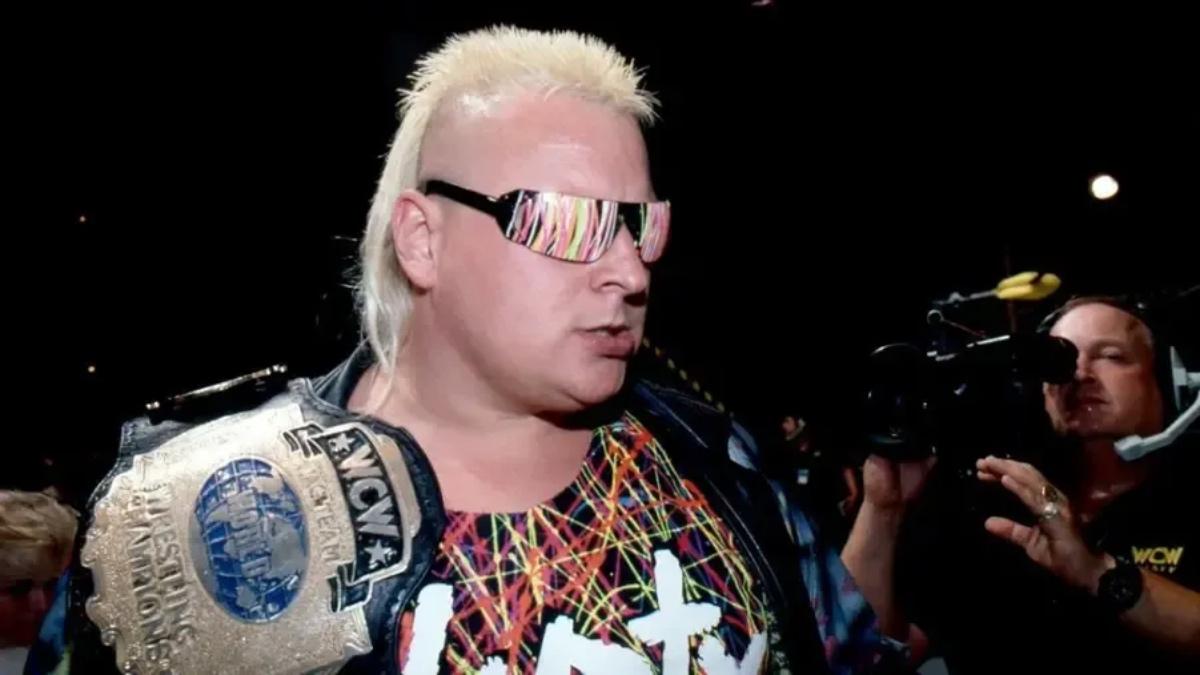
Knobbs, doubtless worried about the reputational damage to the XWF brand, offered all the arenas the chance to do either full shows or autograph sessions as a make-good, but only the arena in San Marcos agreed to host an autograph session and a few hundred fans turned up to meet talent who were no doubt annoyed at this latest turn of events.
It turned out there had been hardly any advertising in any of the markets and advanced ticket sales for all four shows were pitiful. In Tyler, for example, only 50 tickets had been sold for a show advertising the likes of Roddy Piper and Rena Mero. Luckily for the wrestlers, the $40,000 advance covered their flights and fees for the four shows.
There was talk of running more house shows in June, but that talk quickly evaporated. On the TV deal front, wrestlers were again told to expect an announcement imminently, with FX or Fox Kids the rumoured destination. Turner, on the other hand, was a non-starter.
In June 2002, the talk turned to the XWF actually buying a five-week television run using the tapes from the initial batch of tapings, in the hope they could pop a rating and leverage that into a house show run or attract a proper TV deal.
The tentative plan, according to reports, was to do a five-week run in September and October, likely on the WGN network in Chicago, and build to an October pay-per-view.
One major issue, however, was that a big chunk of the talent on the TV show – namely Hulk Hogan – wouldn’t be on whatever pay-per-view they could put together.
Any other name talent they might want to use may also opt to work for the newly-created NWA: TNA instead. Jeff Jarrett’s promotion was still an unknown and many within the industry didn’t believe it would survive to see the end of the year, but it was still something the XWF had to factor in.
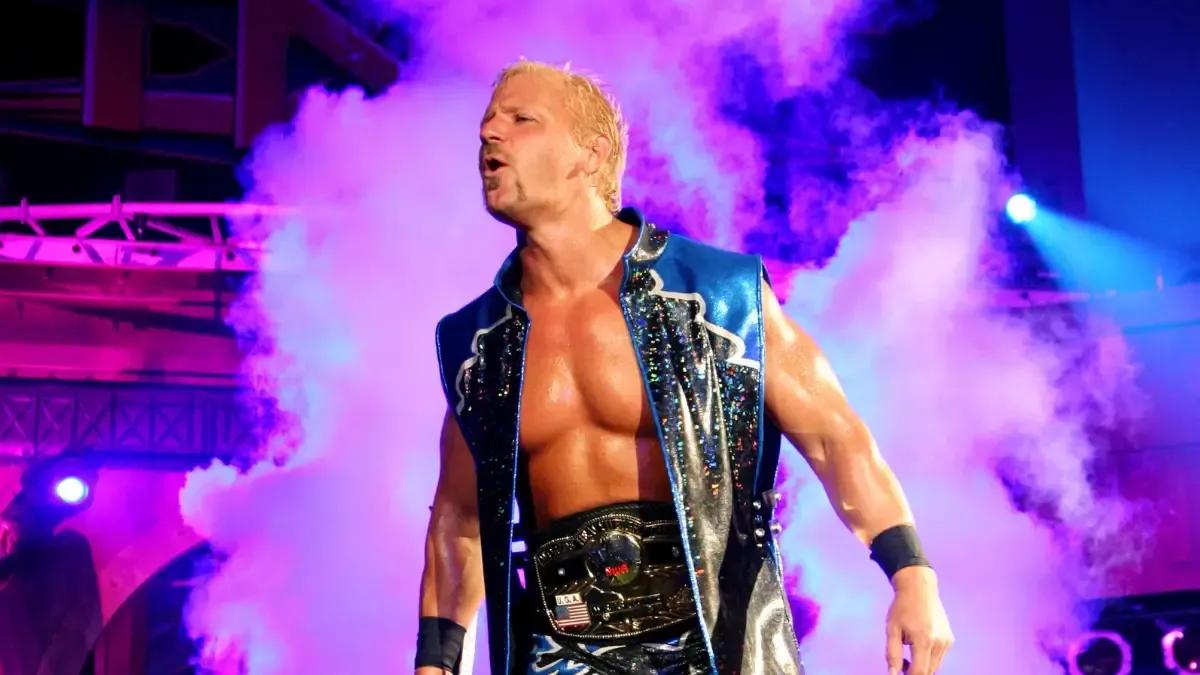
For all the talk of getting a TV deal, running a pay-per-view, or even becoming a house show touring company, the stark reality was that since November all the XWF had to show for their efforts was 10 outdated episodes of television and a couple of badly attended house show loops.
After a long meeting on June 26, 2002, XWF backers and management concluded that there was no way to do business in the United States. There just wasn’t any interest from the networks and they didn’t want to spend $330,000 to get their show on a local station in Chicago. The people controlling the purse strings were going to cut their losses after putting in millions of dollars for no return.
The company wouldn’t shut down completely, though the office employees were let go. Wrestlers who were either on a retainer or a low downside guarantee were also informed that they were no longer under contract.
There was still a slim hope that the XWF could sell the tapes abroad and then put an international tour together, but it was evident by this point that they weren’t going to be an alternative to WWE in the US.
One place the XWF could do some business – or at least keep their name alive – was Puerto Rico, with Jimmy Hart striking a deal with the World Wrestling Council - who had been attached to the XWF from the start - to run an XWF ‘invasion’ storyline in the promotion, with the likes of Kid Kash and The Nasty Boys defending their XWF Cruiserweight and Tag Team titles there. It was planned to be a long-term deal but the invasion didn’t do good business at the box-office and culminated in an XWF vs. WWC show on October 20, which drew around 3,000 fans.
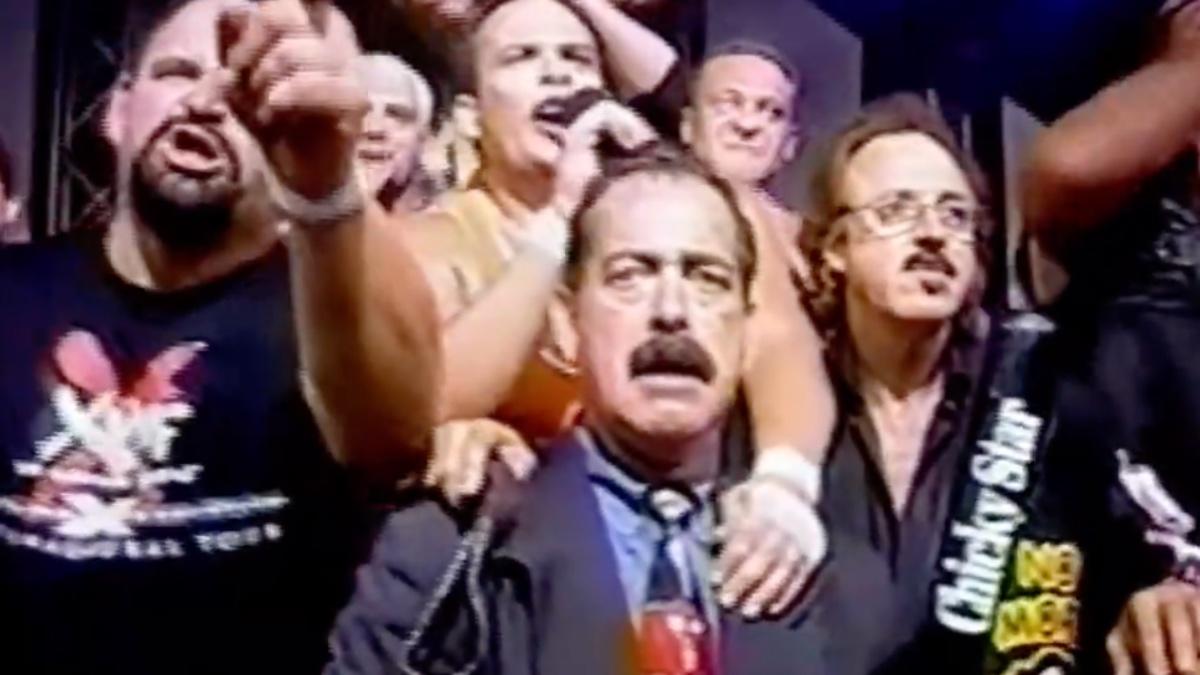
After that, the XWF just sort of seemed to fizzle out. The excitement was gone. The big stars were gone. There were new alternatives, such as TNA and even Ring of Honor, for fans to get into.
The only thing left to do was try to monetise whatever XWF content they had, which began with a one-hour, reduced price pay-per-view called XWF: In Your Face, which aired on March 16, 2003.
A little over a year later, it was reported that Jimmy Hart was purchasing whatever was left of the XWF, most significantly the rights to the tape library. Later that year, the talk within the industry was that Hart was hoping to resurrect the promotion with a focus on the European market. He even flew to England to do promotional work ahead of the XWF’s debut on The Wrestling Channel.
Hart continued to work on trying to make money from the XWF, with a three-disc DVD featuring the ‘lost’ episodes of the XWF released on July 10, 2005. The main selling point was the Hulk Hogan vs. Curt Hennig match and, naturally, the Hulkster received a nice cut of the DVD sales. That match was also included on WWE’s 2006 three-disc DVD set Hulk Hogan: The Ultimate Anthology, with the company presumably licensing the footage as a favour to Jimmy Hart.
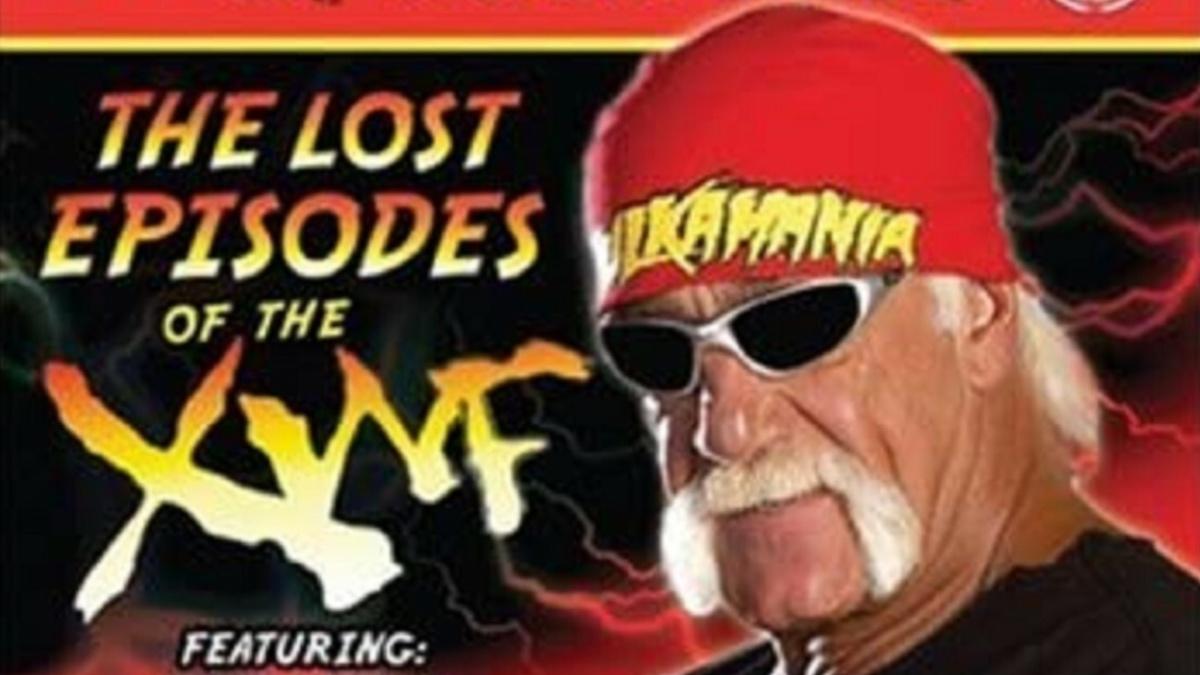
While that appeared to be the end of the XWF, Jimmy Hart relaunched the promotion’s website with new branding in late 2008, prompting speculation that the promotion could be coming back.
Speculation was all it turned out to be, however. There would be no return of the XWF, a promotion that arrived with a lot of hype and promise and at various points seemed poised to become an alternative – for the wrestlers, as much as wrestling fans – before the harsh reality of trying to start up a national company from scratch during uncertain times consigned them to history.